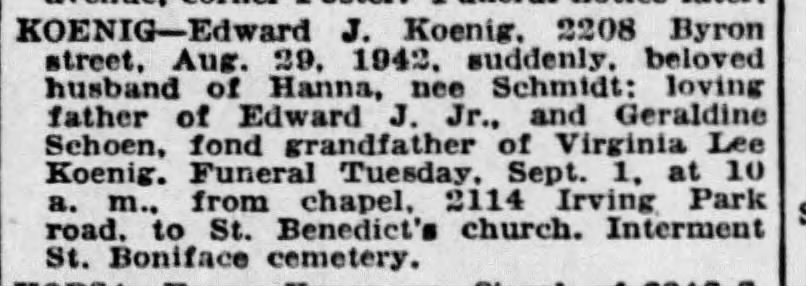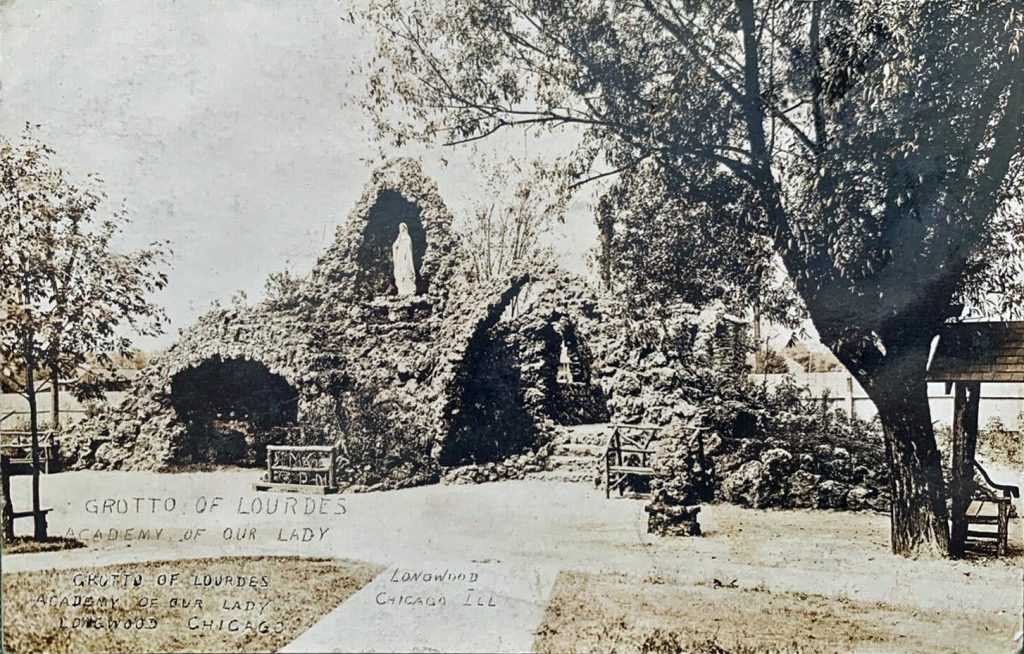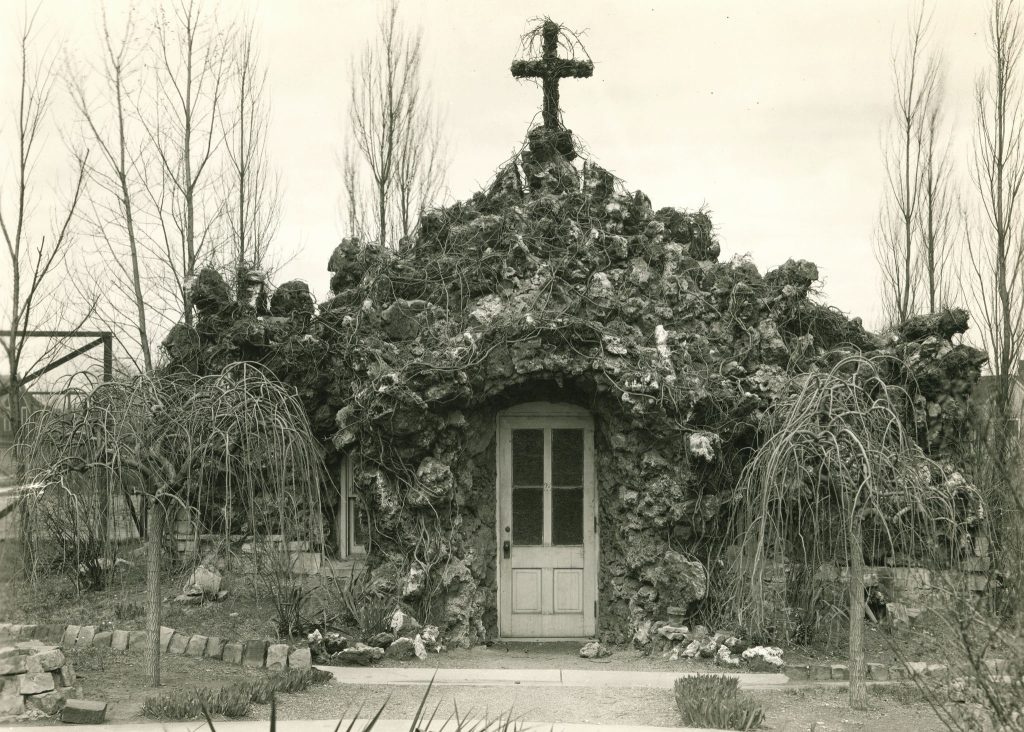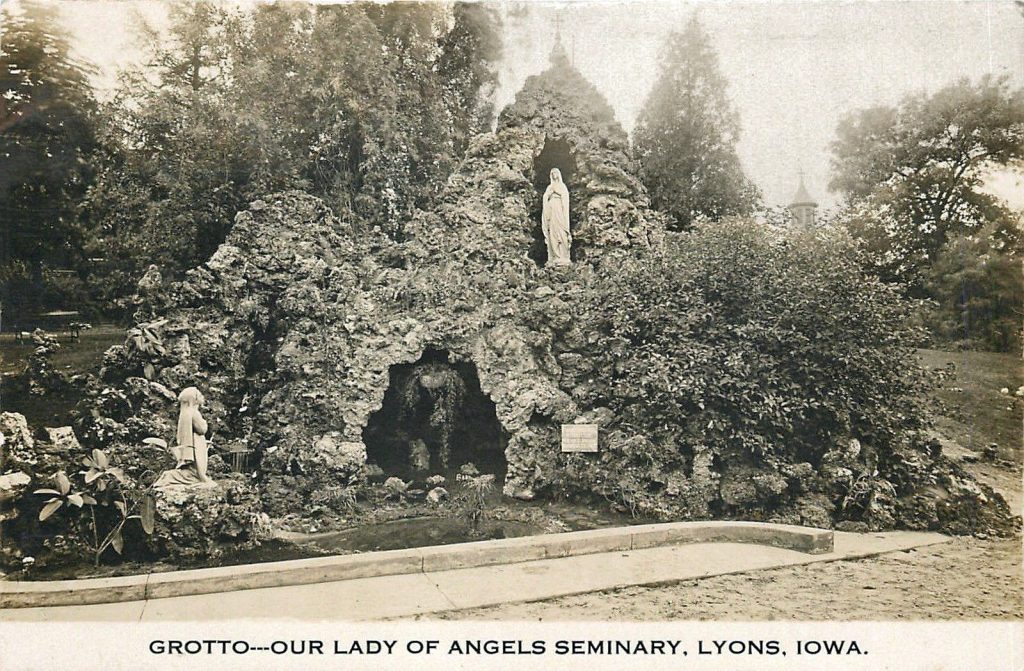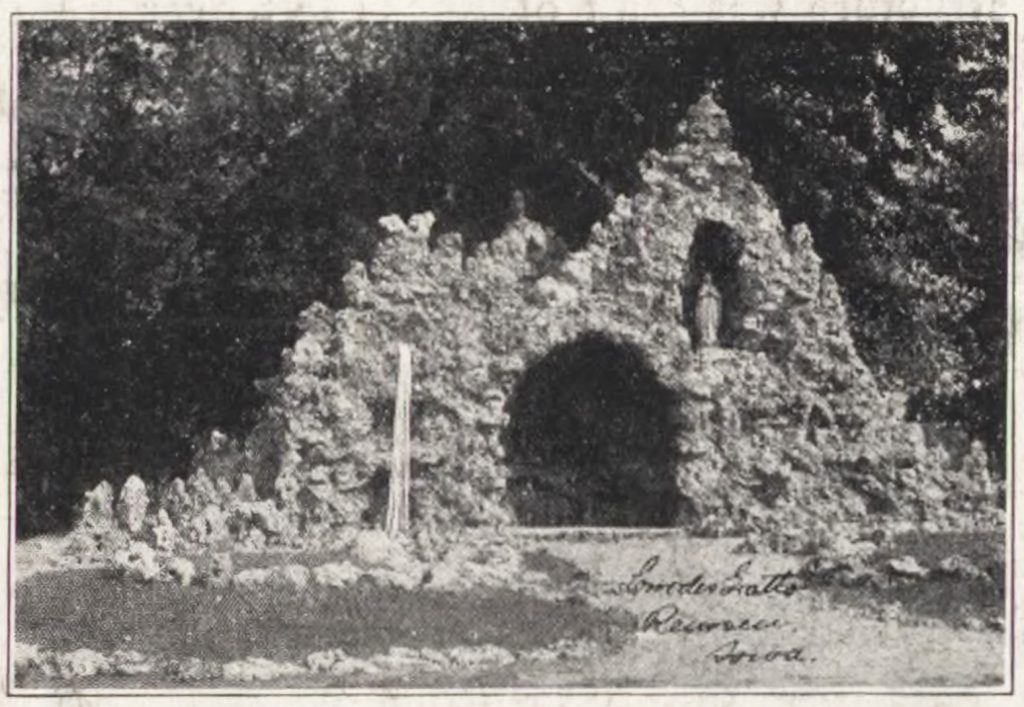Edward J. Koenig, the “Grotto King”
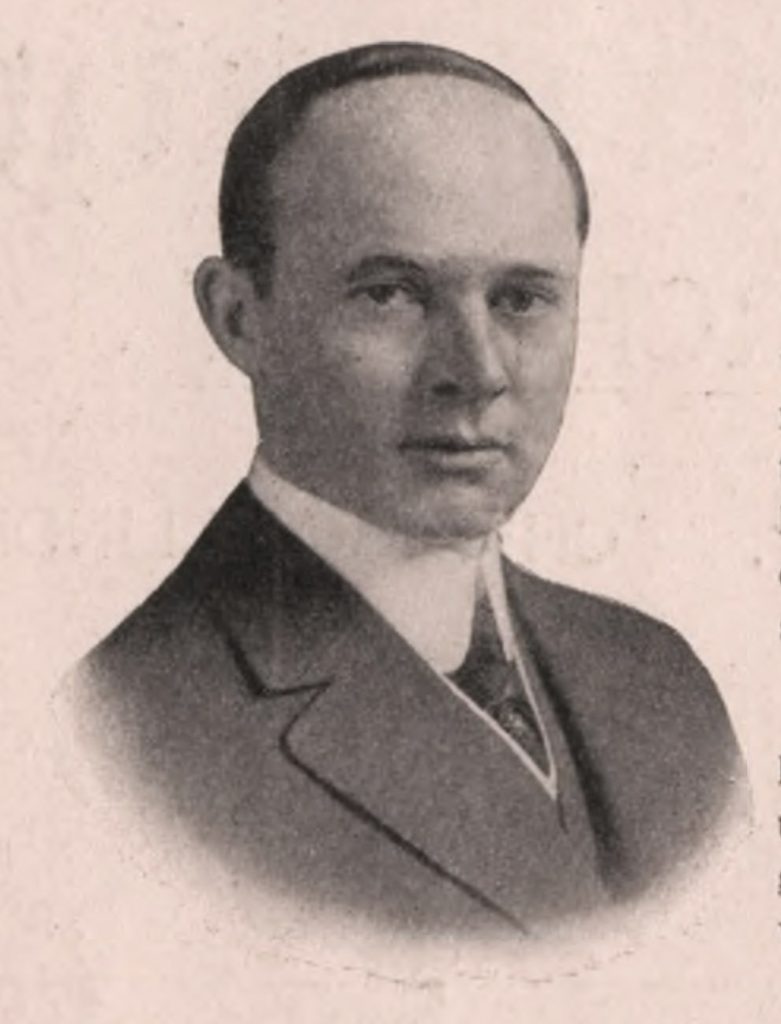
Edward J. Koening (1886-1942) built at least two dozen grottos, mostly Lourdes grottos, in the Midwest between 1906 and the 1920s.
When I first began to look for Lourdes grottos in the Midwest, I came across an article about the mysterious ruins of a grotto in Omaha, Nebraska, at the site of what was St. Joseph’s Hospital. The enterprising Omaha World-Herald reporter had done some digging and found that the hospital’s records stated that it had been built by an Edward J. Koenig, a Chicago landscape architect who specialized in building religious grottos.
I did some more online searching and found mentions of him in historical newspaper articles, advertisements in magazines, and modern online articles.
But most excitingly, I found a online catalog record for a pamphlet he published around 1917, held in the library of the Missouri Historical Society. A librarian there very kindly scanned the 20-page pamphlet and sent it to me.
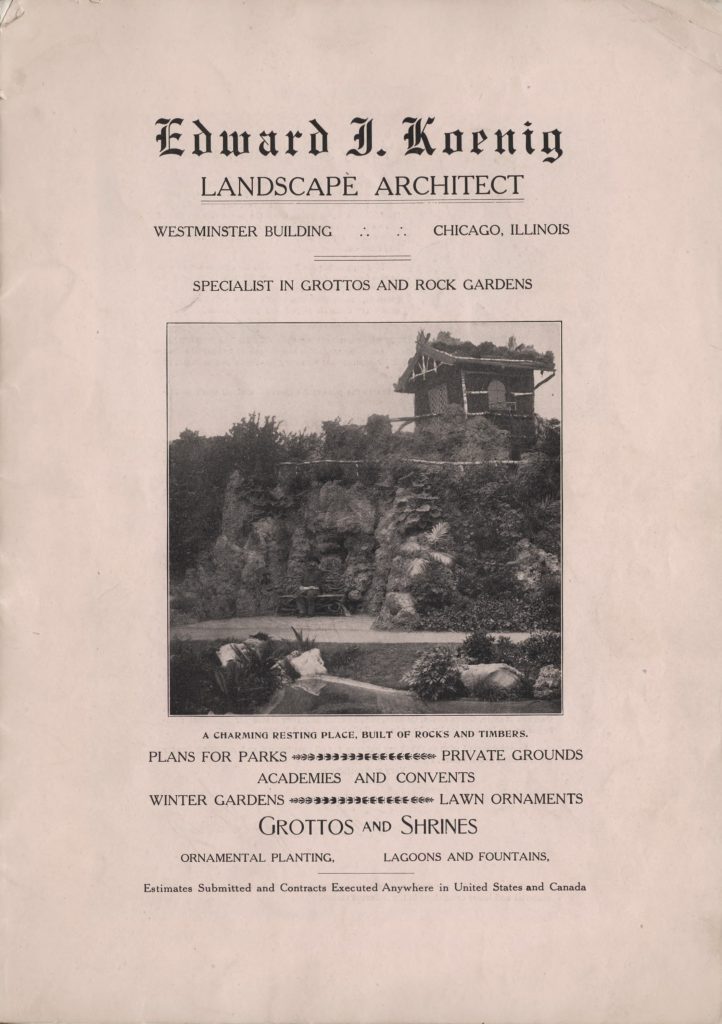
(Click here to see the entire pamphlet.)
Koenig’s pamphlet shows photos of ten grottos he built and mentions at least five others, together with other general landscaping projects he did for cemeteries and churches. I’ll detail the those, plus the others I have found that were credited to him, below. But first, some biographical details:
Edward J. Koenig was born on October 16th, 1886 in Germany, according to his death certificate. A ship’s list shows his arrival in New York from the port of Bremen on the S.S. Barbarossa on June 30, 1906 (see image at right). He was only 19 years old when he arrived in the US.
The ship’s list states that his last residence was in Brilon, Germany (a small town in North Rhine-Westphalia, in the northwest of Germany, bordering the Netherlands and Belgium). It’s not known if Brilon was his birth place or simply where he was working or studying.
The ship’s list also stated that his destination was Crown Point, Indiana. His contact person was listed as his brother, the Rev. Fred F. Koenig, at Rural Route No. 3, Crown Point, Indiana. The Rev. Koenig was pastor at Sts. Peter and Paul Catholic Church (referred to as Turkey Creek, at 5851 Harrison Street in Merrillville, which no longer exists).
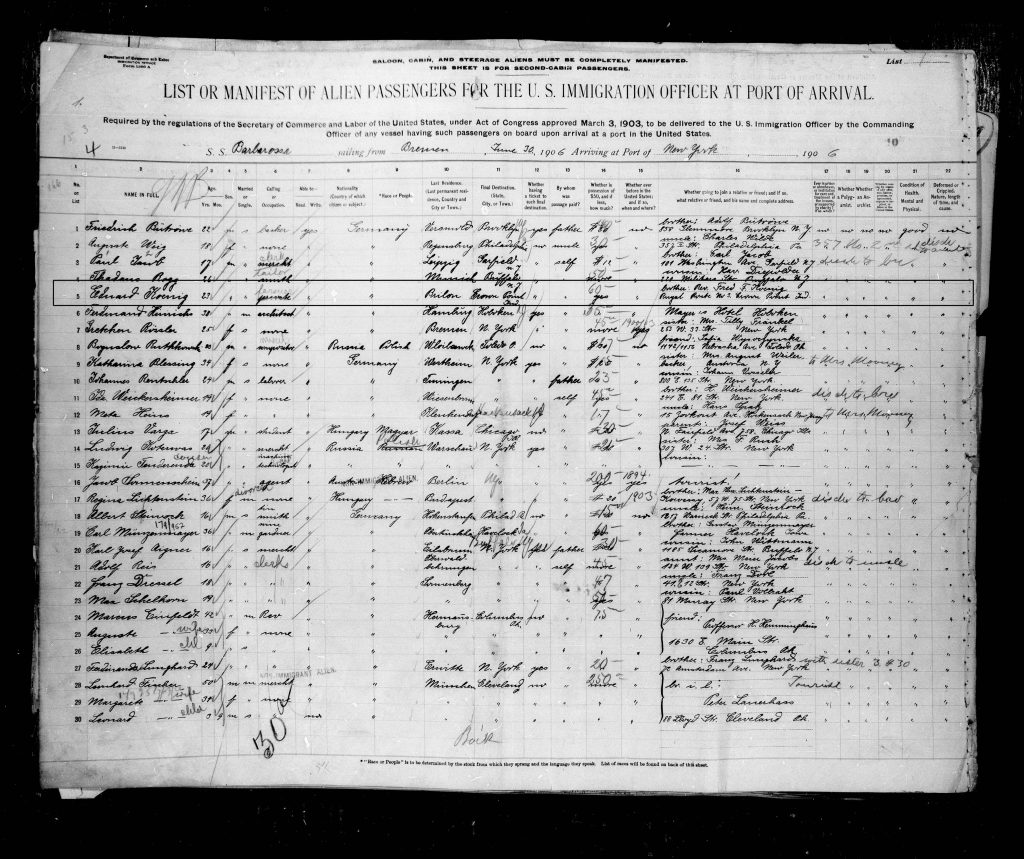
Edward J. Koenig began building grottos in Indiana immediately upon his arrival, so he clearly had learned how to do so in Germany.
In his pamphlet, he stated: “Finishing a ten year course of Landscape Gardening in Europe in 1904, I came shortly after that to America and have ever since been engaged in my work.” A ten-year course was likely an apprenticeship, particularly since in 1904, he was only eighteen years old.
It’s possible he also took more formal classes in landscape architecture as part of his training. His brochure offered standard landscape architecture services and landscaping plans, and included several drawn plans he had done for clients, which indicates some formal training in drawing landscape plans:

Koenig probably remained in northwestern Indiana for a year or two, and then moved to Chicago by 1909. These early years were when he established his grotto building career in Indiana and Chicago.
In 1910, Koenig relocated to Beatrice, Nebraska (about 100 miles southwest of Omaha). The relocation was likely at the behest of a client. Local newspapers show that he worked with Beatrice nurseryman Carl Sonderegger, and also did a large landscaping project for local medical clinic owner H.M. Hepperlin. He also built grottos in Omaha and in Kentucky during this period, and may also have used this time to travel to solicit clients in Nebraska and Kansas.
In November 1910, Koenig married Hannah J. Schmidt of Chicago (she was likely of German descent but both her parents had been born in Illinois).
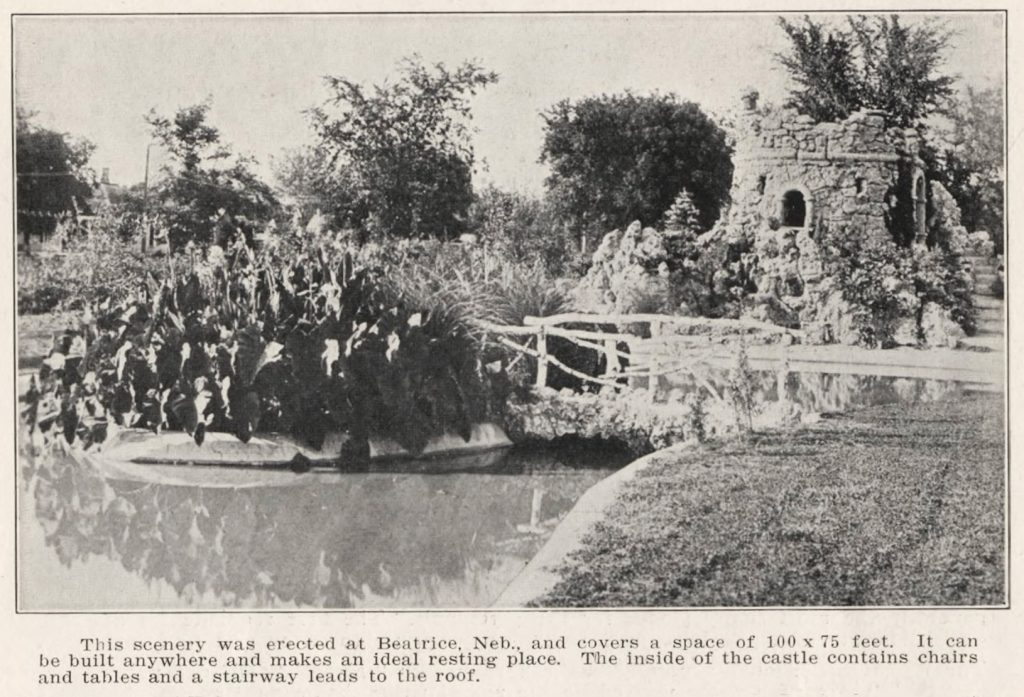
Koenig’s Grotto Projects
Edward J. Koenig probably built at at least twenty grottos, mostly Lourdes grottos. Most were included in his brochure (although not all were pictured in it), and a few have been discovered through mentions in newspaper articles.
The front introduction to his brochure stated that only “a few views of my work” were shown and that “besides those printed on the succeeding pages I have a good many more.” He likely built many more grottos not credited to him.
Below are eighteen grottos that have been credited to him in his brochure or newspaper articles:
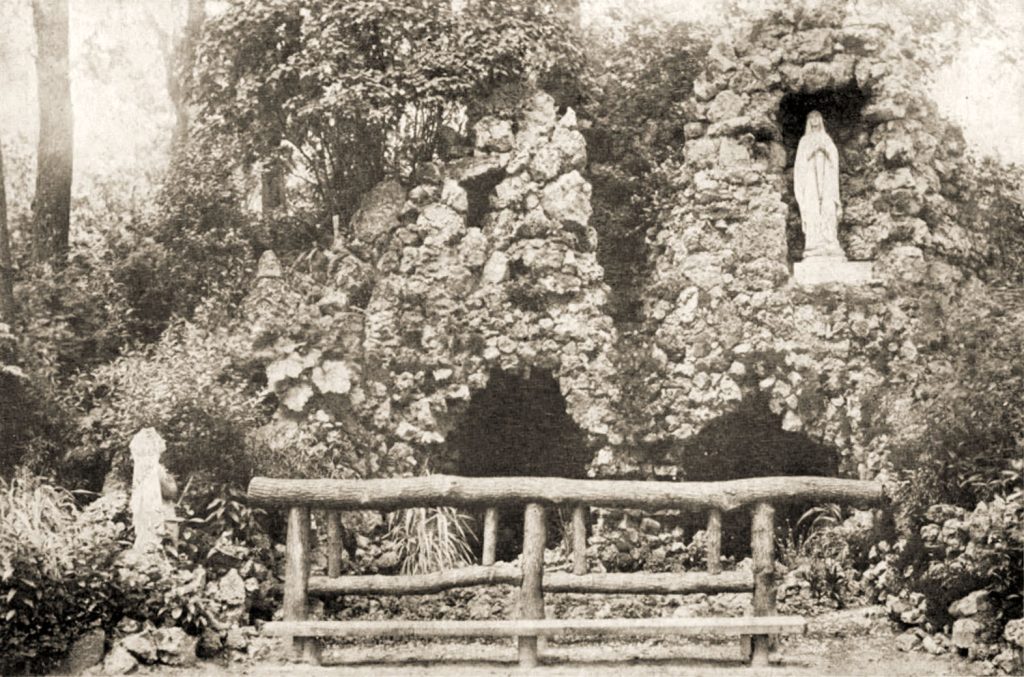
Schererville, IN: St. Michael Parish (1906)
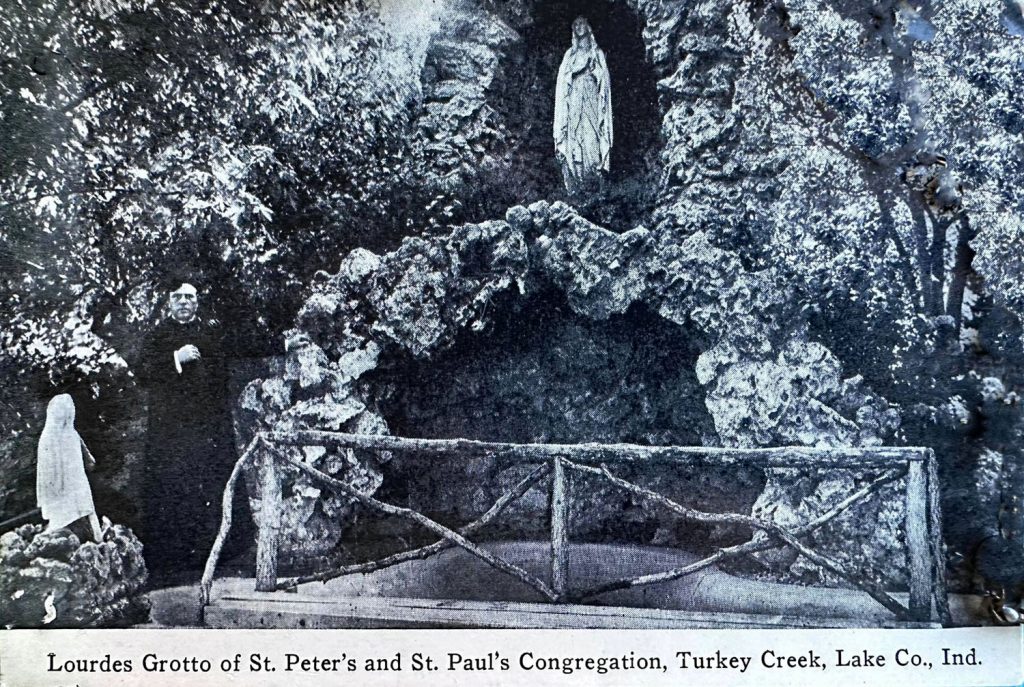
Merrillville / Turkey Creek, IN: Sts. Peter and Paul Church (c.1907)
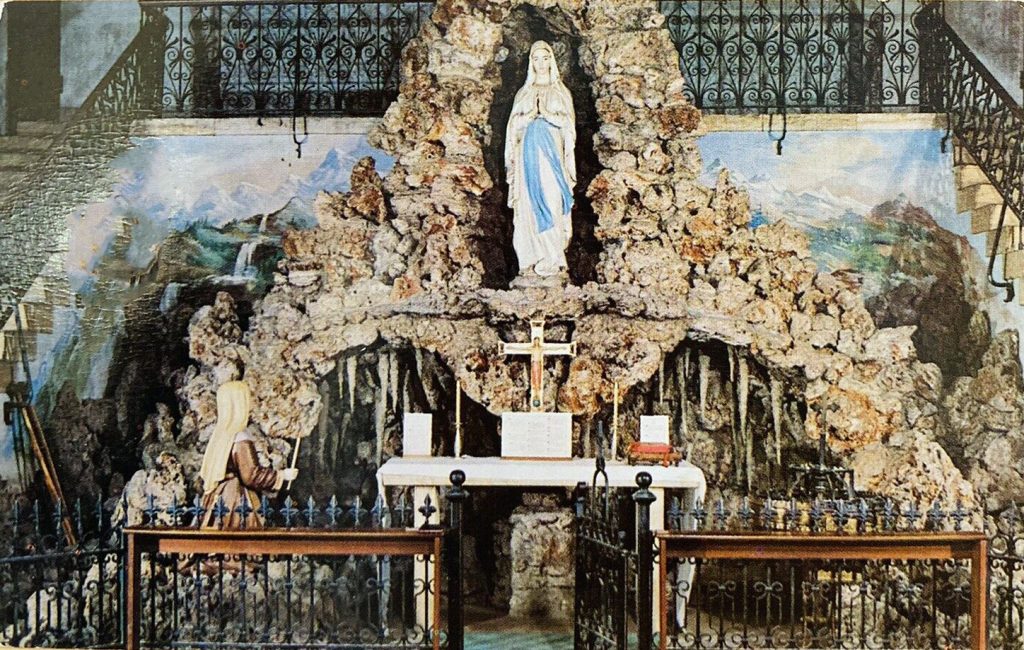
St. Meinrad, IN: St. Meinrad Archabbey (1908)
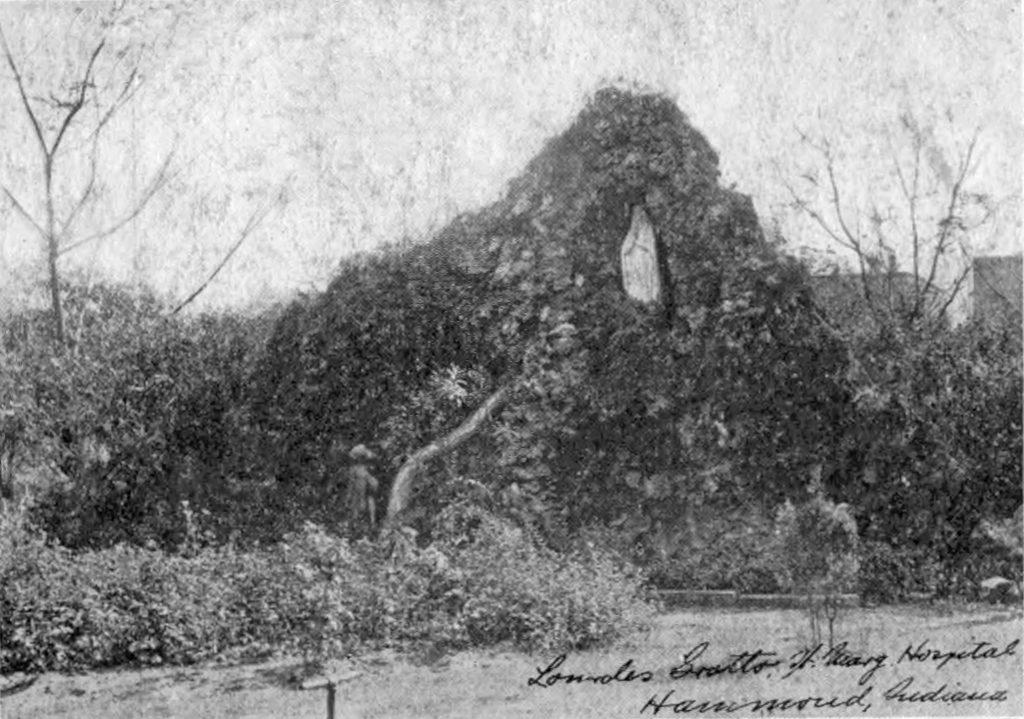
Hammond, IN: St. Margaret Hospital (1909)
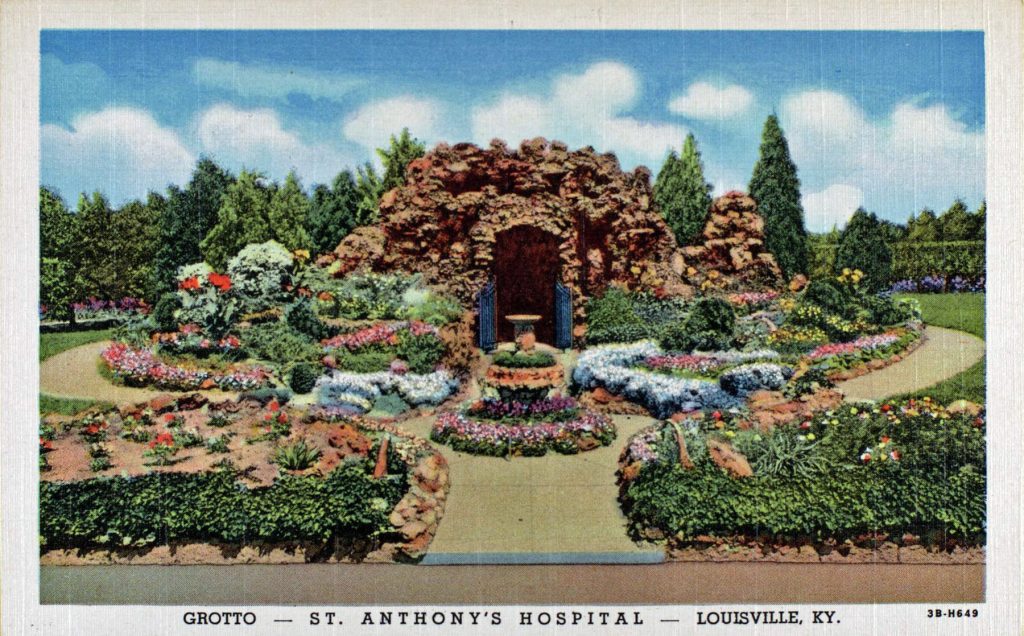
Louisville, KY: St. Anthony’s Hospital (1911)
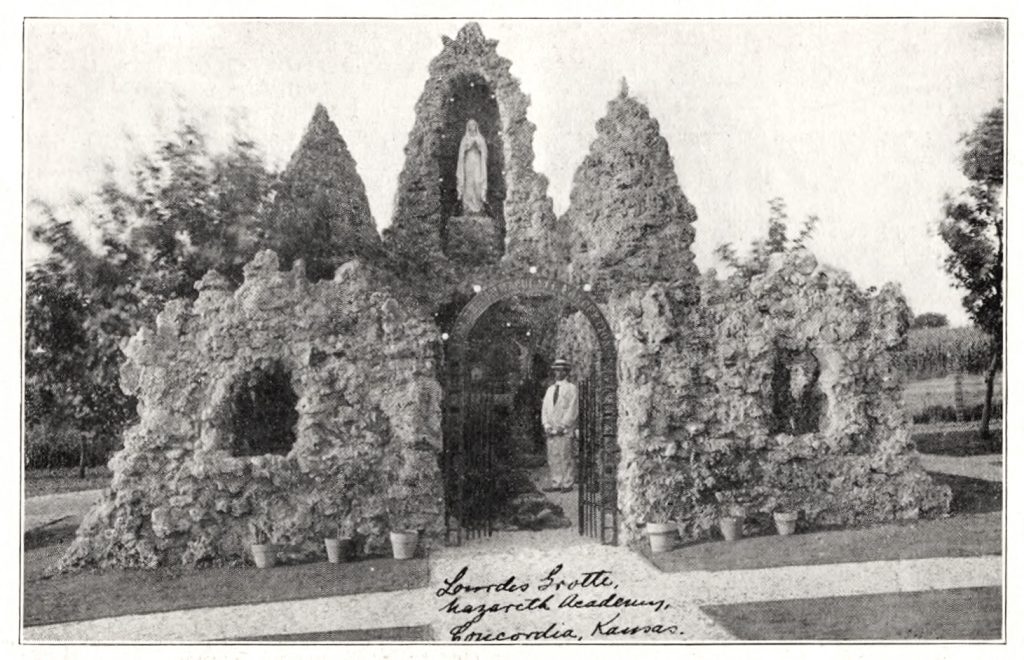
Concordia, KS: Nazareth Academy, Sisters of St. Joseph
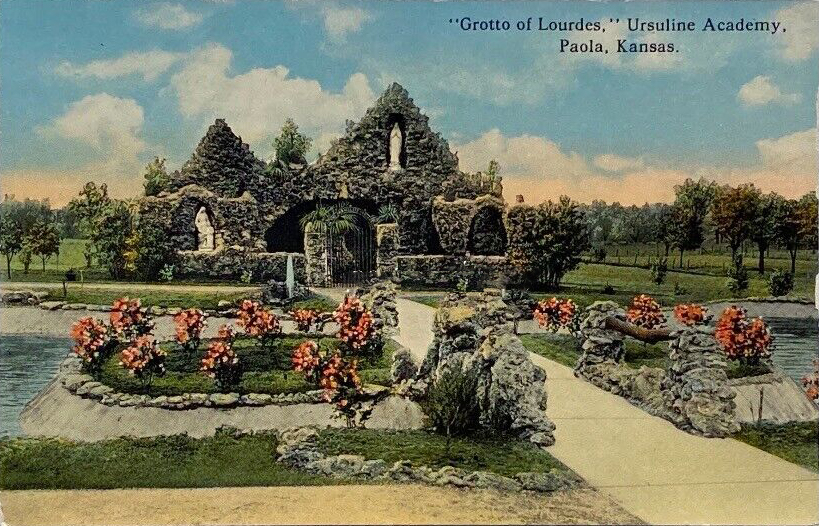
Paola, KS: Ursuline Academy (1916)
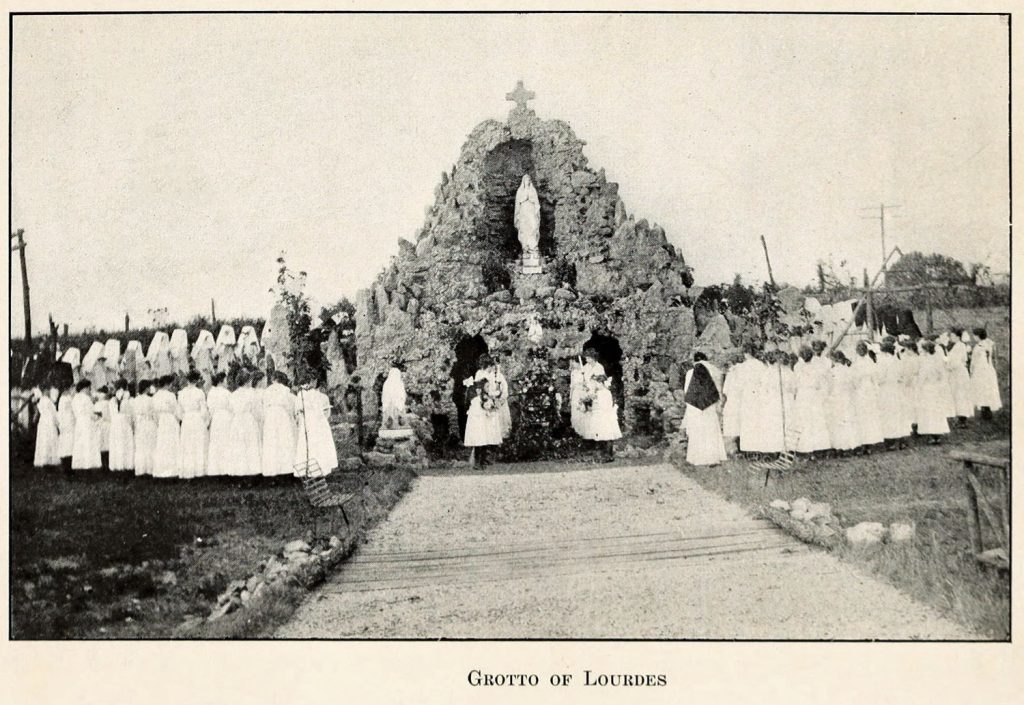
Springfield, KY: St. Catherine’s Convent (1916)
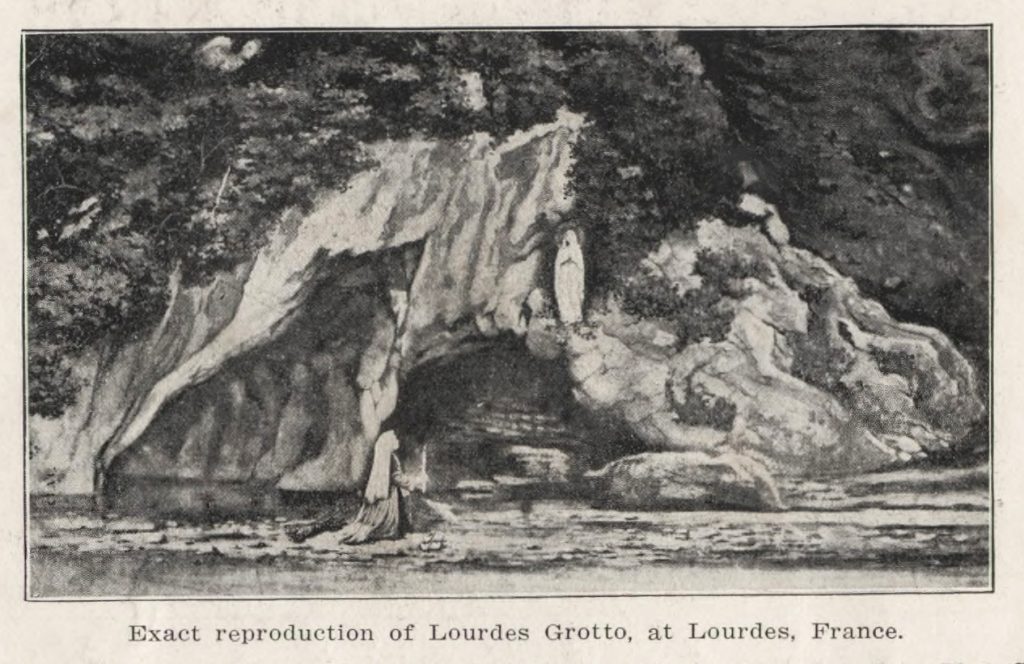
Hot Springs, SD: Our Lady of Lourdes Hospital (1917)
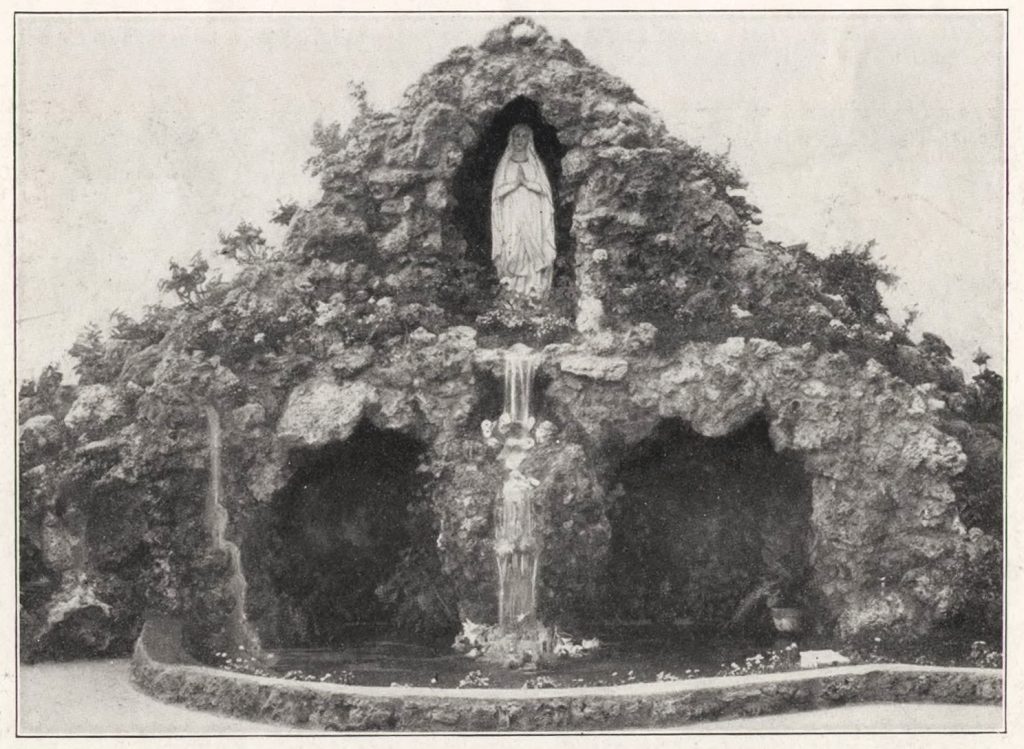
Chicago, IL: Monastery of Poor Clares (c.1910-1915)

Adrian, MI: St. Joseph Convent, Dominican Sisters (c.1910-1915)
Koenig’s brochure also mentioned grottos in Alton, Illinois (at the Ursuline Convent), Quincy, Illinois (at St. Mary’s Academy), and Aurora, Illinois (at Annunciation Church, 1910) for which I have not yet located good photos. And he built the grotto at the cemetery of Johnsburg Catholic Church in Johnsburg, IL in 1920, according to a newspaper article.
Later Career
By 1912, Koenig was again listed in articles as a resident of Chicago. He did not appear anywhere in the 1910 census, but in the 1920 census at around age 34 he, his wife, and young son and daughter were recorded living at 1420 Belleplaine Avenue (next to Graceland Cemetery, and about a mile from St. Benedict Parish, where the family likely attended church). His occupation was listed as Architect, Landscape.
In 1920 following WWI, he advertised his landscaping and grotto services to churches and other religious institutions, with a professional address of 110 South Dearborn Street, in the Westminster Building, in Chicago.
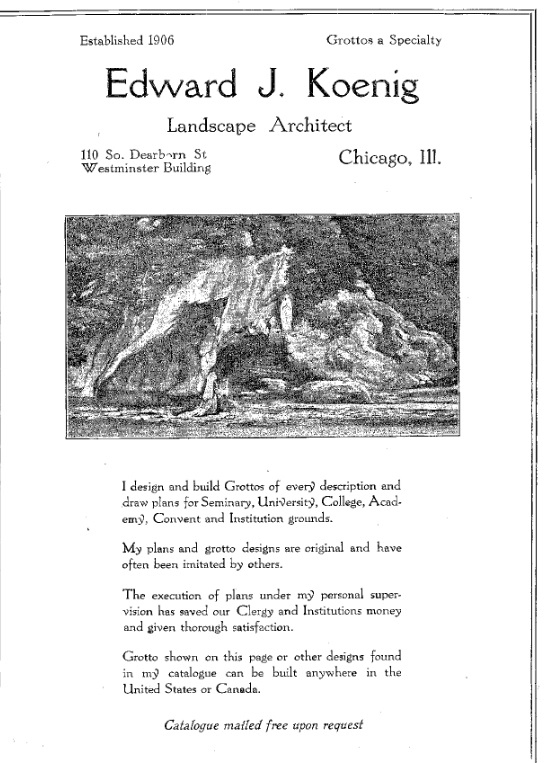
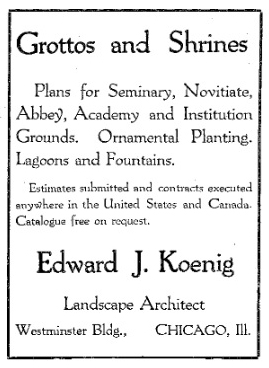
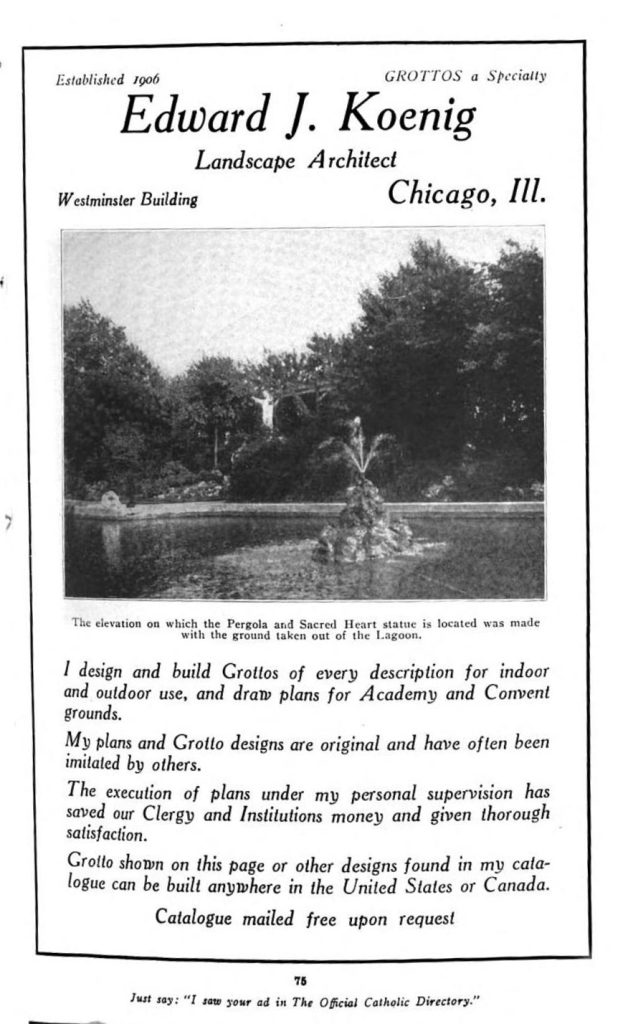
By 1923, Koenig had started another business, importing liturgical art from Germany. He formed a venture with the Hubert Gotzes Company of Crefeld, Germany, a weaver of fine cloth for ecclesiastical vestments and banners. The Edward J. Koenig Company House of Liturgical Art acted as the US distributor for Gotzes as well as several other German ecclesiastical craft houses. He had locations in Chicago and Los Angeles, California.
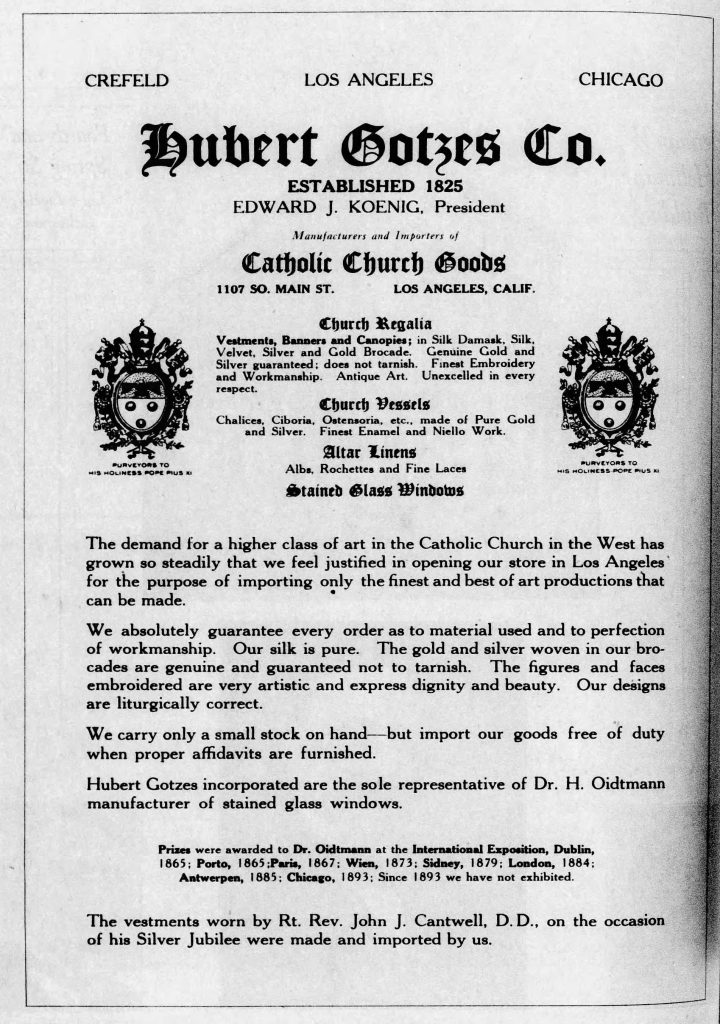

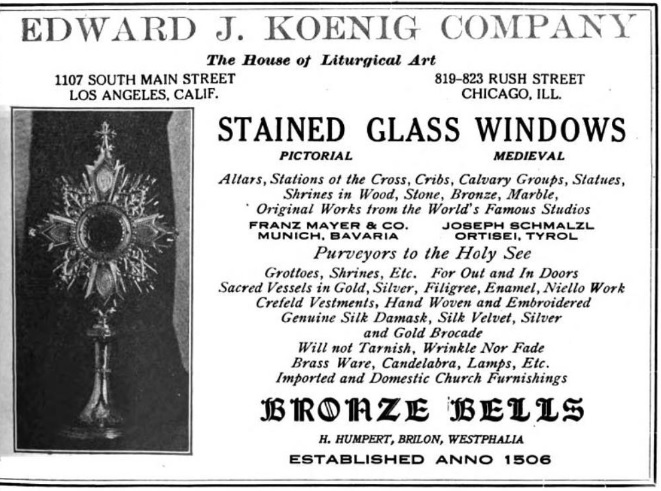
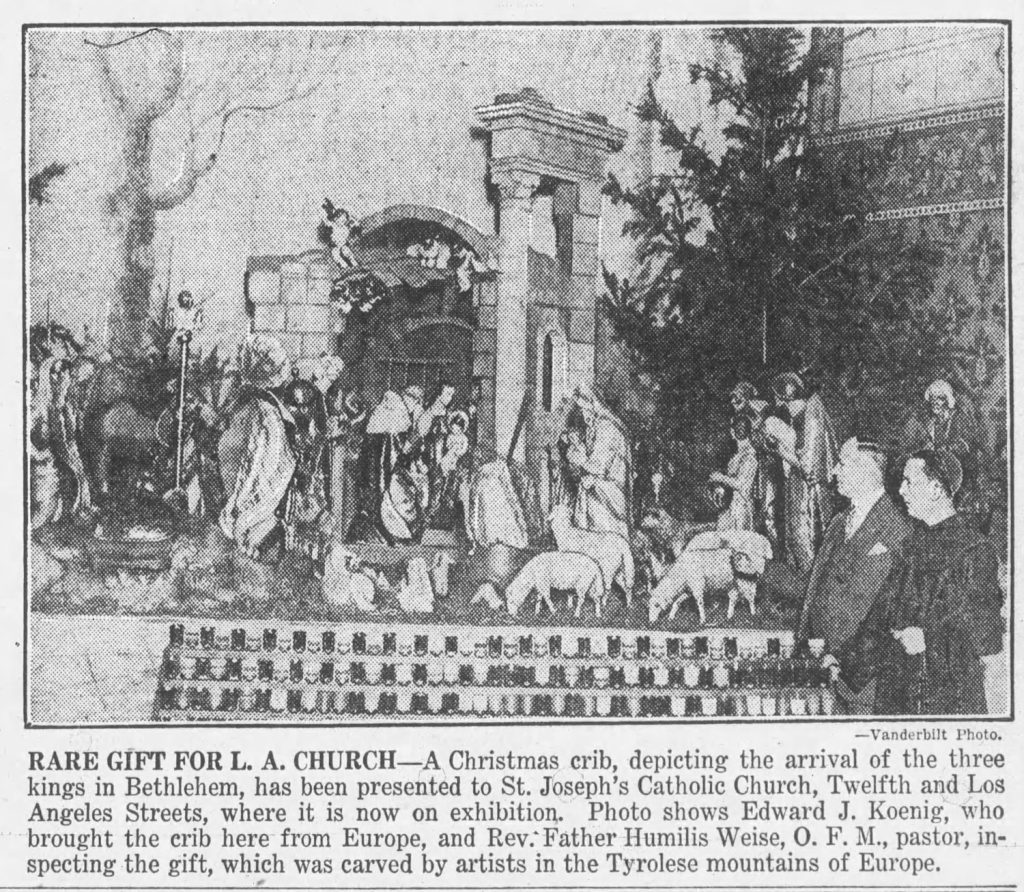
In the 1930 census, Koenig (age 44) and his family were shown living at 3858 North Leavitt St., next to St. Benedict Parish, which his family certainly attended. His occupation was listed as Salesman, Commercial.
Koenig may have continued to build grottos during the 1920s and 1930s. A 1928 article in the Catholic Advance about Marymount College in Salina, Kansas mentioned that “Mr. G. Gossens, assistant to Mr. E.J. Koenig, the grotto builder of Chicago, is here making plans for the new grotto.”
By 1940, Koenig, his wife and 22-year-old daughter had moved across the street from their 1930 residence and lived on the St. Benedict Parish property, at 2208 Byron Street. His occupation was listed as Gardener at a private institution–obviously at St. Benedict’s. Koenig was 54 years old in 1940 and may have retired to devote his services to his church. His income for the previous year was only $640, less than the $1,000 that his daughter Geraldine made as a stenographer; housing may have been included in his parish position.
Edward J. Koenig died on August 29, 1942 at his home address at St. Benedict’s Parish, and was buried in St. Boniface Cemetery.
